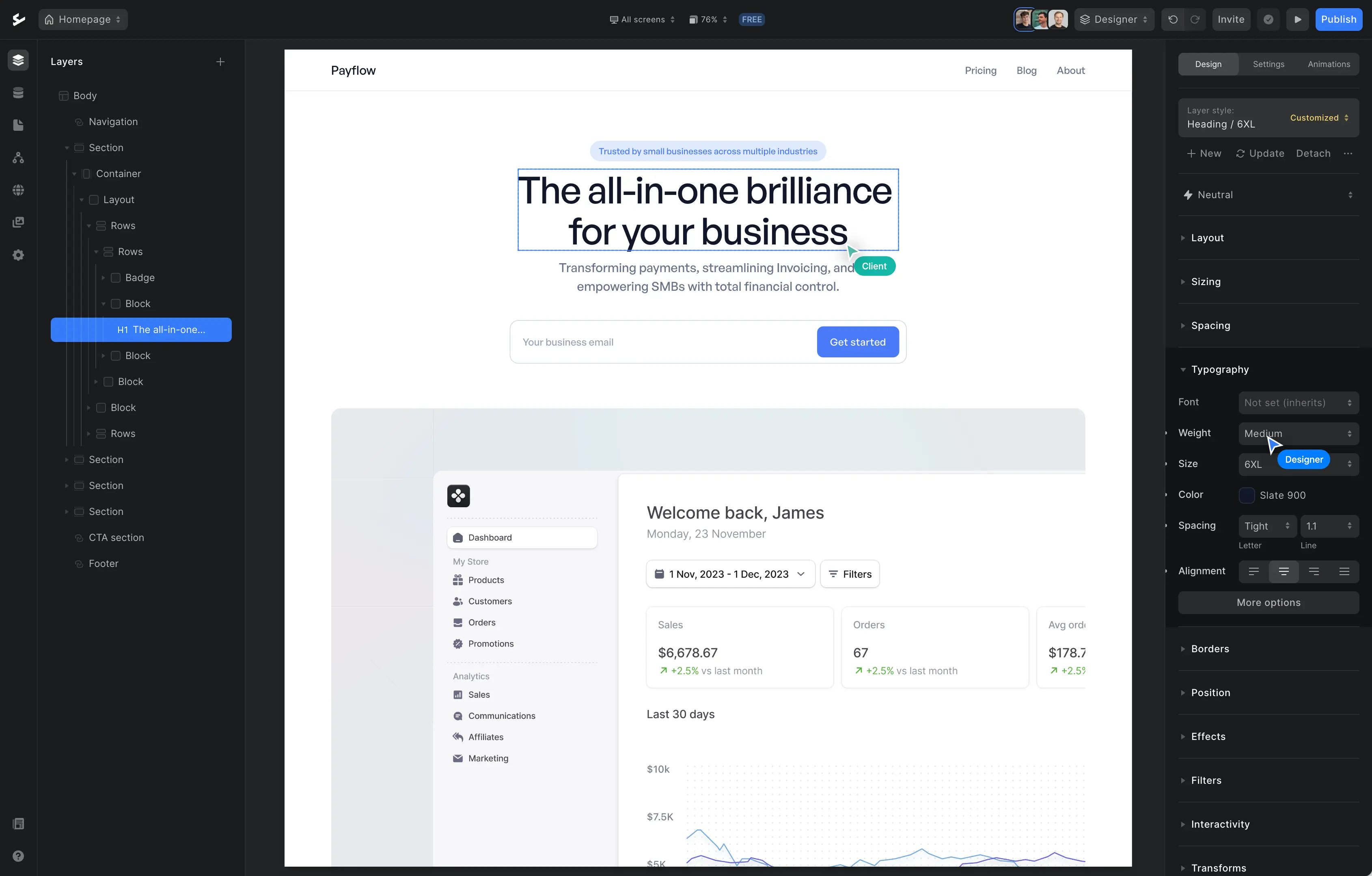
If you’re feeling overwhelmed by GA4 or looking for an alternative that better suits your privacy needs, you’re not alone. Many website owners are searching for reliable, easy-to-use Google Analytics alternatives that deliver deep insights without the learning curve or data privacy concerns. Here are some reasons why you might want to consider using a Google Analytics alternative:
Privacy Concerns: Google Analytics collects extensive user data, which can raise privacy issues, especially in regions with strict data protection regulations (e.g., GDPR in the EU).
Complexity: GA4 has a steep learning curve, with an interface and reporting system that can be overwhelming, especially for users with limited analytics experience. Since Google Analytics changes so often, it can be difficult to keep up.
Cost for Advanced Features: Google Analytics 360, the premium version with advanced features, can be prohibitively expensive for small businesses and nonprofits.
Fortunately, there’s a range of powerful tools available—many of which are free or affordable—that can help you track, analyze, and optimize your website’s performance just as effectively. In this guide, we’ll walk you through the top 10 Google Analytics alternatives, comparing their unique features, pricing, and user feedback to help you find the best fit for your analytics needs.
Website Builders with built-in Analytics
1. Ycode

Ycode’s Site Analytics provides a complete overview of website performance right within the platform, eliminating the need for external tools. This built-in feature includes visitor tracking, referral sources, top-performing pages, and device and geographic data—all while ensuring user privacy with GDPR compliance, no cookies, and anonymized visitor data. Ycode’s analytics are also free across all pricing tiers, which range from a free plan to the Pro and Enterprise levels. This integration makes it easy for users to access critical data without incurring additional costs or managing external connections.
Pros:
Built-in Analytics: Analytics are seamlessly integrated into the platform, eliminating the need for external tools.
Privacy-Focused: GDPR-compliant, cookie-free, and anonymizes visitor data.
Cost-Effective: Analytics are included at no extra cost across all Ycode pricing tiers.
Ease of Use: Simple to access and use directly from within the CMS.
Cons:
Limited Advanced Analytics: May not offer as deep of a feature set as dedicated analytics platforms for advanced users.
Tied to Ycode: Only available to Ycode users, so not an option for those on other platforms.
2. Webflow

Webflow, a Ycode competitor, recently launched Webflow Analyze, an in-platform analytics solution that allows users to monitor visitor trends, bounce rates, and popular pages. Webflow Analyze is available as a paid add-on, starting at $29/month for 10,000 sessions, on top of existing Webflow subscription costs. This can add up quickly, especially for users running multiple projects or websites. While Webflow’s analytics are helpful for tracking basics, it lacks some of the granular control or customization that a dedicated analytics tool might offer.
Pros:
Recently Introduced Analytics: Webflow Analyze provides built-in visitor data tracking, allowing users to access analytics without external setups.
Detailed Insights: Tracks visitor behavior, top pages, and bounce rates directly within Webflow.
Convenient for Webflow Users: Keeps all insights within the platform, streamlining the process for existing users.
Cons:
Additional Cost: Analytics is a paid add-on, starting at $29/month for 10,000 sessions, which can be expensive.
Limited Customization: Webflow Analyze is less flexible than some dedicated analytics tools, which may be limiting for advanced users.
3. Framer

Framer, a Ycode and Webflow competitor, is another website builder that offers built-in analytics, allowing users to track visitor engagement and page performance. While convenient, Framer’s analytics feature is more costly compared to Ycode. Framer is known for its design-focused capabilities rather than analytics, which means it may not have the same level of data depth or flexibility that some users require. For those primarily interested in analytics, Framer’s higher pricing and focus on design might make it less appealing as an all-in-one solution.
Pros:
Integrated Analytics: Built-in analytics allows users to access key metrics without external integrations.
Design-Focused Platform: For designers, Framer offers a blend of visual editing and analytics, making it convenient to track performance within the same tool.
Cons:
Higher Pricing: Framer’s overall cost is higher than some alternatives, making it a more premium option.
Limited Analytics Depth: Framer’s analytics capabilities are not as advanced as those of dedicated analytics solutions, which may be a drawback for data-focused users.
Dedicated Analytics Tools
For those considering standalone analytics solutions, several privacy-focused alternatives to Google Analytics are available.
4. Fathom Analytics

Fathom is a popular Google Analytics alternative focused on privacy and simplicity. It offers a clean, easy-to-understand dashboard with key metrics like page views, bounce rates, and unique visits—all while being GDPR-compliant and cookie-free. However, Fathom’s analytics are limited compared to traditional platforms, and users seeking in-depth data analysis may find its functionality lacking. While Fathom’s focus on privacy and simplicity is ideal for some, its minimalistic approach may be a drawback for those who require advanced tracking or extensive reporting.
Pros:
Privacy-First: GDPR-compliant and doesn’t use cookies, making it ideal for privacy-conscious users.
Simple Interface: Easy-to-understand dashboards focused on essential metrics like page views and referral sources.
Quick Setup: Straightforward to set up and use, with minimal configurations required.
Cons:
Limited Features: Fathom is designed for simplicity and may not offer the depth of insights needed by advanced analytics users.
Subscription Cost: Fathom is a paid tool, which may be a consideration for users on a tight budget.
5. Plausible Analytics

Plausible is another privacy-first, lightweight analytics tool that is open-source and GDPR-compliant, with no cookies or IP tracking involved. It provides basic metrics like page views, referral sources, and top-performing pages, all displayed in a straightforward interface. While Plausible’s simplicity is a plus, it lacks some of the more advanced analytics features, such as funnel analysis and user segmentation. While Plausible is budget-friendly, it requires a subscription, meaning users will need to account for the recurring cost if they choose it over Google Analytics.
Pros:
Open-Source and Privacy-Focused: GDPR-compliant, cookie-free, and data is stored on European servers for increased data privacy.
Minimalistic and Lightweight: Simple, lightweight interface with easy access to essential metrics like page views, referrers, and top-performing pages.
Cons:
Limited Advanced Features: Lacks complex tracking features like funnels and goal tracking, which may be limiting for users requiring more in-depth analysis.
Subscription-Based: Although affordable, it’s still a recurring cost compared to some free tools.
6. Matomo

Matomo, formerly known as Piwik, is a robust open-source analytics platform that offers extensive features, such as goal tracking, e-commerce analytics, and heatmaps, providing a level of control similar to Google Analytics. Unlike Fathom and Plausible, Matomo is feature-rich and allows users to store data on their own servers for maximum privacy. However, Matomo’s comprehensive toolkit can make it overwhelming to navigate for beginners. Additionally, Matomo's on-premises version requires server setup and maintenance, which can be a drawback for those without technical expertise.
Pros:
Feature-Rich: Offers advanced analytics, including heatmaps, goal tracking, and e-commerce analytics, comparable to Google Analytics.
Data Control: Users have the option to self-host, giving them full ownership over their data.
Privacy-Oriented: GDPR-compliant and highly customizable, making it suitable for users with strict privacy requirements.
Cons:
Complex Interface: Matomo’s extensive feature set can make it overwhelming for beginners or users seeking simplicity.
Self-Hosting Setup: For those opting to self-host, setup and maintenance can be technically demanding.
Higher Cost for Premium Features: Some advanced features and support options require a paid subscription or add-ons, increasing the overall cost.
7. Mixpanel

Mixpanel is a powerful Google Analytics alternative for product and event-based analytics, focusing on detailed user actions and customer journeys. This tool is highly popular for SaaS and e-commerce sites that require granular insight into user behavior.
Pros:
Event-Based Tracking: Specialized in tracking specific user actions, making it ideal for analyzing product or app interactions.
Advanced Segmentation and Funnel Analysis: Provides in-depth segmentation and funnel tools for detailed insights into user journeys.
Customizable Metrics: Offers robust customization for analytics, helping teams focus on specific goals and behaviors.
Cons:
High Cost for Advanced Features: Although there is a free tier, accessing premium features can be expensive, especially for small teams.
Steep Learning Curve: Mixpanel’s detailed analytics may be overwhelming for beginners or those new to event-based tracking.
8. Heap Analytics

Heap Analytics is a standalone analytics platform that automatically tracks user actions without the need for pre-configuring events. It’s ideal for users who want the flexibility of retroactive analysis, providing a unique Google Analytics alternative for tracking complex user behaviors.
Pros:
Automatic Event Tracking: Records all user actions by default, allowing users to analyze behaviors retroactively.
In-Depth User Flow Insights: Provides clear visualization of user flows and funnels, useful for identifying and optimizing key user paths.
Intuitive Interface: User-friendly and visually oriented, making it approachable for users of all levels.
Cons:
Subscription Cost for Larger Teams: While affordable for smaller teams, Heap’s costs increase for large teams or enterprises.
Limited Real-Time Tracking: Data is not always updated in real-time, which may not suit users needing immediate insights.
9. Amplitude

Amplitude is a powerful, event-based analytics tool that specializes in product analytics, making it a google analytics alternative well-suited for SaaS companies and apps. Amplitude’s focus on user behavior and customer journeys allows for detailed insights into how users interact with a product.
Pros:
Product Analytics Focus: Tracks user interactions in-depth, making it ideal for analyzing engagement and retention for digital products.
Advanced Segmentation and Retention Analysis: Provides robust tools for segmenting users and analyzing retention, helping teams understand long-term engagement.
Custom Funnel Analysis: Offers customizable funnel analysis, allowing users to track specific paths and optimize conversion rates.
Cons:
Steep Learning Curve: Amplitude’s advanced features can be challenging to master, particularly for beginners or non-technical users.
Premium Pricing: While a free plan is available, access to more advanced tools and customization requires a premium subscription, which may be costly for small businesses.
10. Clicky

Clicky is a real-time analytics tool that serves as a straightforward Google Analytics alternative, providing essential metrics and insights with an emphasis on live tracking. It is popular for its intuitive interface and focus on real-time visitor data.
Pros:
Real-Time Tracking: Offers immediate insights into visitor behavior, making it ideal for users who need up-to-the-minute data.
User-Friendly Interface: Known for its simplicity, Clicky is easy to navigate and accessible for users of all experience levels.
Heatmaps and On-Site Analytics: Provides heatmaps and on-page analytics, giving a visual representation of user interactions.
Cons:
Limited Free Features: While Clicky has a free plan, most advanced features (like heatmaps and uptime monitoring) are only available on paid plans.
Less Customization: Compared to more robust platforms, Clicky offers limited customization, which may not suit users looking for advanced or tailored insights.
Conclusion on Google Analytics Alternatives
While there are numerous Google Analytics alternatives available, Ycode stands out by offering built-in Site Analytics at no extra cost, providing users with essential insights directly within the platform. Unlike standalone analytics tools or more costly website builders like Webflow and Framer, Ycode’s integrated approach simplifies the process, giving you access to all the information you need in one place. For users looking for an all-in-one solution without additional costs or external tools, Ycode’s Site Analytics offers a highly convenient and valuable alternative.
Get your project started today
Discover our intuitive visual editor, use built-in CMS collections, SEO features and launch your web projects with ease.

